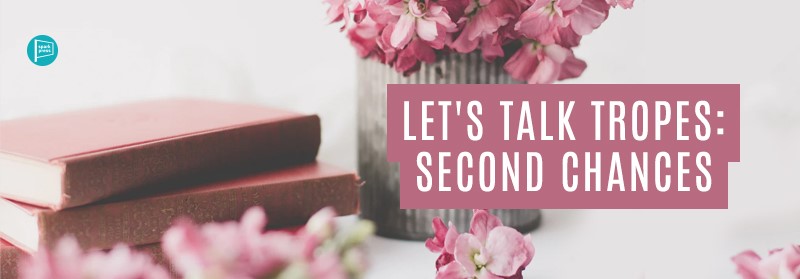
A second chance is a special thing in storytelling. Not only because it enables the mending of past relationships or the redemption of a once-morally-questionable character, but because it speaks to anyone who has ever wished for a do-over (or granted one). As readers, we can relate to characters who fall out, grow, and reunite; characters who have made mistakes and learned from them. Whether you’re an avid romance reader, a fan of the coming-of-age genre, or enthusiastically rooting for Steve Harrington in Stranger Things, you’ve likely experienced the allure of the Second Chance trope at one point or another.
Setting the Stage
The trope usually focuses on a specific character or a specific relationship. In either case, before granting a second chance, it’s important to describe the first one. If the trope is relationship-focused, this means establishing the original relationship between the main characters prior to their fallout or separation. If the trope is focused on the growth and development of a singular character, then it requires some demonstration of that character’s personality and/or past before the character can begin to redeem themselves. This way, readers have a point of reference that will leave them hoping for a second chance. For instance, if two characters are happily in love before the event of their separation, readers are more likely to desire a reunion of those characters because they witnessed that happiness. A good example of this is Nicholas Sparks’ The Notebook. When Allie moves away and her mother intercepts all of Noah’s letters to her, their separation is made all the more painful because readers (and viewers) witnessed how passionately devoted they were to each other before being torn apart. On the other hand, if a main character is introduced as having many flaws and a broken moral compass, the author must plant seeds of hope that the character will eventually evolve and redeem themselves. In T.J. Klune’s Under the Whispering Door, Wallace Price is a cold, insensitive workaholic until his death gives him a second chance at life. The introduction of his flawed character compels readers to stick with him on his journey to better himself.
The Tragic Fallout
After establishing these characters and their relationships, the next step is to unravel the tragic fallout. Which mistakes were made that brought them to the breaking point? Which circumstances befell them to put them in this position? It could be the result of bad timing, miscommunication, a life-altering experience, or scheming family members. Whatever the reason for the downfall or separation, it should be dramatic, but not completely unjustifiable. This especially goes for writers of the redemption arc: There is a limit to what can be redeemed. A character who does terrible things can still be forgiven but it’s important to ask: how far is too far? Once a character’s actions become inexcusable, it becomes much harder to convince readers to excuse them.
Unraveling the tragic fallout usually happens one of two ways: In a chronological fashion, where the story is told following the order of events as they occur, or with the use of anachronies (flashbacks and flashforwards). In the latter, jumps in time are used to provide context for the present and reveal how the main character(s) ended up in their current situation. Emily Henry, Colleen Hoover, and Taylor Jenkins Reid have all leveraged the use of flashbacks in their writing to tell stories in an intriguing and captivating way. There are a lot of great books that shift perspectives between chapters from past to present, and the Second Chance trope can be found in many of these.
A New Beginning
Then there’s the reunion or redemption. In most books that use this trope, there’s something that brings the main characters back together or redeems the character who needs a second chance. This might be attributed to the resolution of a miscommunication, the dawning of a great epiphany, or simply the passage of time. In any case, the characters typically find themselves changed and ready to reunite with an old flame and/or start a new way of life. When written well, the reunion or redemption of the main character(s) provides a satisfying and heartwarming ending for readers.
The Second Chance trope is one that will resonate with anyone who has made mistakes in the past and has grown from those experiences. It’s why we love to read about second chances: It reminds us that it’s never too late to start working towards a better future.


Leave A Comment